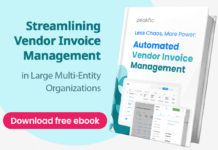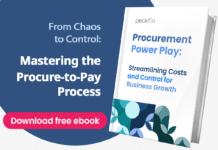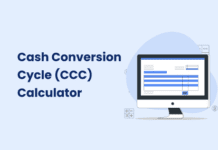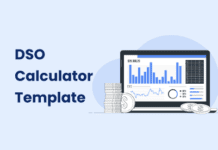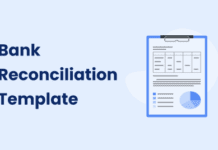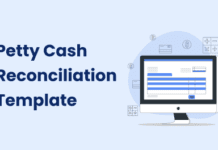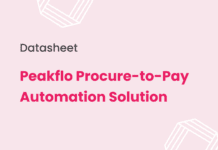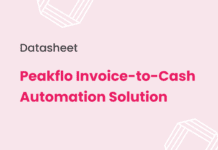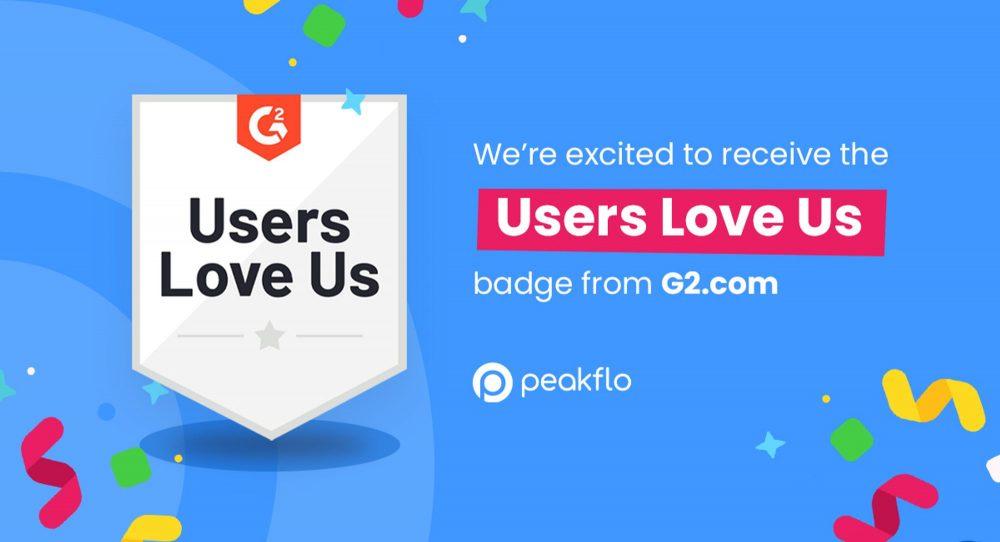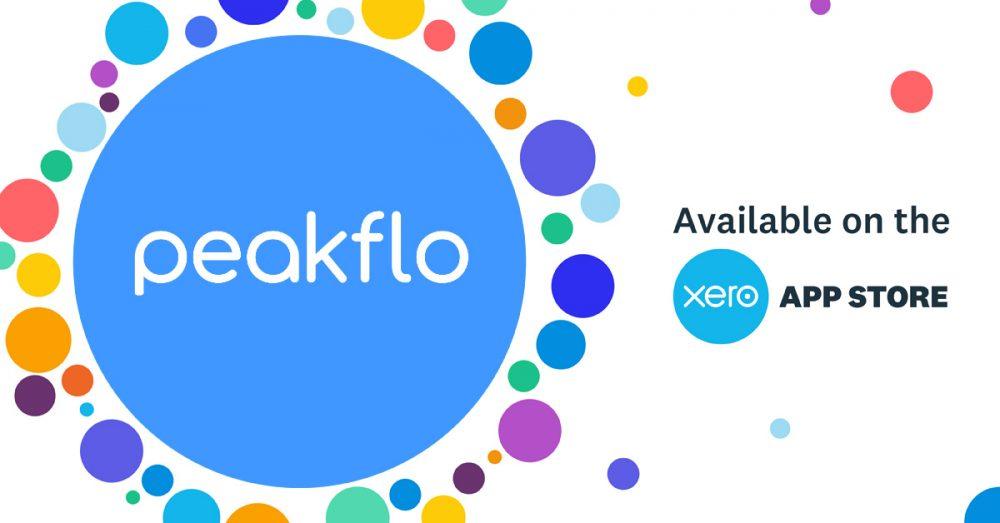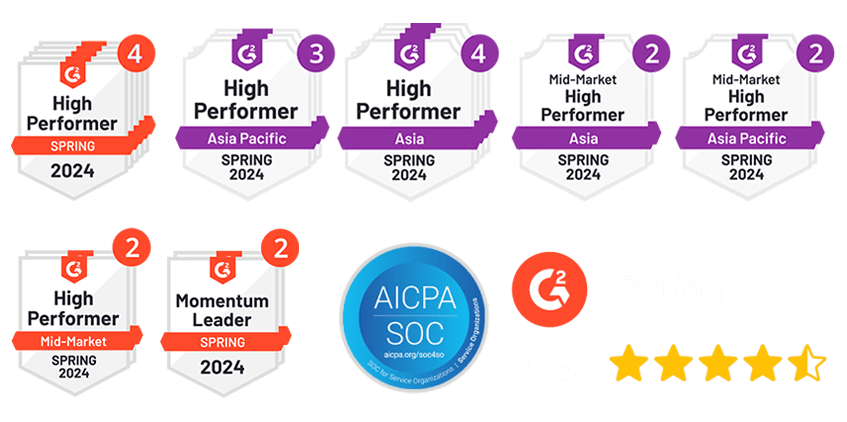Cold calling rejection rates can be brutal for sales teams. A typical sales rep might face 100 “no’s” before hearing a single “yes”. This staggering reality has frustrated sales professionals for decades, but AI cold calling is changing how teams approach outbound sales.
AI cold calling doesn’t replace your sales team’s expertise—it enhances their capabilities. These systems analyze CRM data to identify high-potential leads, help assess conversion likelihood, and enable your team to focus on what matters most: building meaningful relationships with prospects.
The technology handles lead qualification automatically and sends valuable prospect data directly to your CRM software for organized follow-up. What makes this particularly valuable is that AI systems can engage prospects around the clock across different time zones, while your human representatives concentrate fully on conversations instead of juggling note-taking and listening simultaneously.
Understanding how to implement AI cold calling agents effectively can potentially double your sales results. This guide walks through the essential steps: selecting the right platform, building your knowledge base, ensuring legal compliance, and maximizing your return on investment. The days of relying on those discouraging 100-to-1 odds are behind us.
What Is AI Cold Calling and Why It Matters
AI cold calling represents a shift from traditional manual dialing to intelligent outbound sales processes. Unlike robocalls that simply play recorded messages, AI cold calling uses artificial intelligence to enhance how sales representatives build product awareness, form relationships with prospects, and close deals.
The key distinction is that human sales representatives remain the primary point of contact with prospects. AI serves as a digital assistant that handles tasks like dialing numbers, recording data, and providing real-time insights during conversations. This collaboration between human expertise and AI capabilities creates a more productive sales environment.
The technology behind AI cold calling includes several core components:
- Natural Language Processing (NLP): Enables AI to understand prospect intent beyond their actual words
- Speech Recognition: Converts spoken conversations into text for analysis
- Text-to-Speech: Creates natural-sounding AI voices for interaction
- Machine Learning: Allows the system to improve performance through data analysis
Modern AI cold calling operates on a spectrum. Fully autonomous AI agents can handle entire conversations independently, while AI-assisted platforms work alongside your sales team, providing real-time coaching and handling administrative tasks. Most businesses find the collaborative approach more effective because it preserves the human element that’s critical in sales conversations.
Why 2025 is the right time to adopt it
Several factors make 2025 an optimal time for AI cold calling adoption. According to McKinsey research, companies using AI in sales have experienced up to a 50% increase in lead generation, appointment setting, and overall efficiency. This improvement demonstrates the tangible impact AI can have on sales results.
The global AI market, including marketing applications, is projected to exceed $36 billion in annual revenue. This investment reflects growing confidence in AI’s ability to deliver substantial returns across industries. Salesforce reports that 81% of sales teams already use AI tools today, meaning organizations not adopting this technology risk falling behind competitors.
Economic pressures make AI cold calling particularly appealing. Businesses are focused on optimizing operations and reducing costs. AI cold calling addresses both concerns by reaching more prospects in less time without proportionally increasing staffing costs.
What makes AI cold calling valuable is its ability to transform “cold” outreach into data-informed, context-rich introductions. Today’s AI systems analyze vast datasets, prioritize leads based on conversion likelihood, and craft personalized opening lines using social signals and intent data. Your sales team no longer needs to rely on “spray-and-pray” dialing tactics that have become increasingly ineffective.
AI cold calling offers sales leaders a compelling combination of benefits: enhanced personalization, increased productivity, improved lead qualification, reduced agent burnout, and comprehensive analytics. Most importantly, it allows human sales representatives to focus on building connections and nurturing relationships while AI handles repetitive, time-consuming aspects of outreach.
Early adopters in 2025 will establish significant competitive advantages that may be difficult for others to overcome. The question isn’t whether to adopt AI cold calling, but how quickly and effectively you can implement it to maximize your sales potential.
Core Components of an AI Cold Calling Agent
Image Source: Emitrr
AI cold calling systems operate through four essential technological components that work together to create natural-sounding sales conversations. Understanding how these pieces function helps you choose the right platform and get better results from your AI implementation.
Knowledge base and data sources
The knowledge base acts as your AI agent’s central information repository. This database contains everything your AI needs to engage prospects effectively during calls.
A well-structured knowledge base typically includes:
- Product specifications and pricing details
- Frequently asked questions and answers
- Common objections and appropriate responses
- Competitor comparisons and market positioning
- Case studies and success stories
What makes the knowledge base valuable is that you control its content using your existing materials. When prospects ask questions or raise concerns during calls, the AI retrieves specific information from this repository to provide accurate responses. This ensures your AI agent maintains consistent messaging and represents your brand appropriately, even when conversations take unexpected directions.
The knowledge base evolves continuously as the AI analyzes successful calls and incorporates new information. This ongoing improvement means your cold calling effectiveness increases over time.
Speech recognition and NLP
Speech recognition technology enables your AI agent to process spoken conversations by converting audio into text. These systems transcribe conversations in real-time with high accuracy, capturing every word for analysis. Advanced speech recognition can even detect when a prospect sounds hesitant, allowing the AI to adjust its approach accordingly.
Natural Language Processing (NLP) handles the analytical work after speech recognition completes the transcription. NLP performs several critical functions:
- Parses sentences into understandable components
- Determines the prospect’s intent and sentiment
- Identifies key phrases and objections
- Detects emotional cues in the conversation
This processing allows your AI agent to understand context and generate appropriate responses for fluid conversations. Currently, 47% of sales teams use NLP for call coaching to improve their ability to handle complex B2B conversations.
Text-to-speech and voice quality
Text-to-speech (TTS) technology converts written responses into natural-sounding speech. Modern TTS systems achieve remarkably human-like quality, with some reporting less than 1% detection rates and pronunciation errors.
Effective voice quality depends on several factors:
- Natural intonation and rhythm
- Appropriate pacing and pauses
- Emotional tone matches the conversation context
- Clear pronunciation without robotic qualities
Quality AI cold calling platforms use varied phrasing to avoid sounding scripted. Rather than repeatedly asking “Are you interested?”, they might alternate between phrases like “Does this sound relevant?” or “Would this be valuable for your team?”. This variation creates more authentic conversation experiences.
Superior TTS technology maintains consistent messaging while mimicking human intonation, making automated calls feel less mechanical. This capability proves especially valuable for scaling outreach, as AI can handle thousands of personalized interactions daily without human involvement.
When these four components—knowledge base, speech recognition, NLP, and text-to-speech—operate seamlessly together, they create AI cold calling agents that engage prospects in meaningful conversations, qualify leads efficiently, and dramatically increase your sales team’s productivity.
What AI Cold Calling Agents Can Do
Image Source: Pipedrive
AI cold calling agents handle far more than simple automated dialing. These systems enhance how sales teams connect with prospects across multiple business functions.
Lead generation and organization
AI agents excel at identifying and prioritizing high-potential prospects. The technology analyzes CRM data, social media activity, and website behavior to spot leads with the highest conversion likelihood. This targeted approach allows your team to focus exclusively on promising opportunities instead of pursuing unproductive leads.
Lead scoring becomes significantly more precise when AI algorithms evaluate factors like company size, online behavior, and purchase intent signals. Companies using AI-driven lead scoring report marketing conversion rate increases of 9–20% and churn rate reductions of 13–31%.
AI agents automatically organize qualified leads into prioritized lists and sync this information directly with your CRM. This eliminates manual data entry work while keeping your sales pipeline accurate and current.
Handling objections and FAQs
AI cold calling agents demonstrate particular strength in objection management. Natural Language Processing (NLP) detects common objections like “too costly” or “we’re happy with our current solution” and suggests tailored responses immediately.
When prospects mention satisfaction with their current provider, AI can prompt representatives to respond: “That’s great to hear! Many of our best clients said the same thing. What they discovered was…”.
The systems monitor sentiment during conversations, detecting hesitation or negative reactions before guiding representatives toward effective rebuttals. This real-time support improves your team’s confidence and ability to handle challenging conversations.
Scheduling meetings and follow-ups
AI streamlines appointment setting by booking meetings directly into Google Calendar and similar tools during calls, eliminating scheduling back-and-forth. The system syncs automatically with your team’s calendars to prevent conflicts.
AI manages follow-up processes by generating personalized emails based on conversation details. This consistent follow-up matters because 80% of sales require at least five follow-up calls to close, yet only 8% of salespeople make it past five follow-ups.
The technology determines optimal engagement times for follow-ups and sends automatic reminders to prevent leads from disappearing.
Real-time coaching and analytics
Modern AI agents function as virtual sales coaches during live calls. They analyze conversations in real-time, providing immediate guidance on pacing, talking points, and objection handling.
Tools like Trellus display prospect responses as they speak, suggest relevant questions, and show objection-handling tips directly on representatives’ screens. This live coaching helps representatives sound confident when addressing resistance.
After calls end, AI generates detailed analytics covering talk-to-listen ratios, objection handling success rates, and conversion metrics. These insights help managers identify performance patterns and provide targeted coaching.
Data from thousands of calls enables AI to predict outcomes and suggest next-best actions, allowing teams to refine their approach continuously.
Step-by-Step Guide to Launching AI Cold Calling
Image Source: tekRESCUE
Successful AI cold calling implementation requires a systematic approach. These five steps provide a framework for launching an effective system while avoiding common implementation challenges.
Step 1: Select the right platform
Platform selection determines the foundation of your AI cold calling success. Start by defining your specific business requirements—predictive analytics capabilities, speech recognition quality, or advanced CRM integration needs. Focus on platforms that offer voice customization options and seamless integration with your current technology stack.
Essential platform features include:
- Call performance analytics for measuring effectiveness
- Native CRM integration for data synchronization
- Intuitive user interfaces that simplify daily workflows
- High-quality voice output that maintains natural conversation flow
Most established platforms provide free trial periods or demonstration environments. Before committing to any solution, test the voice AI with questions your prospects typically ask—this evaluation reveals how naturally the system handles real-world sales scenarios.
Step 2: Build and train your knowledge base
Your AI agent’s performance depends directly on the quality and comprehensiveness of its knowledge base. This repository serves as the foundation for accurate, relevant responses during prospect conversations.
Begin with fundamental company information: product descriptions, pricing structures, and competitive differentiators. Then incorporate your established sales methodology, including conversation flows, qualifying questions, and escalation procedures.
Additional knowledge base components:
- Competitor analysis and market positioning data
- Common objections with proven response frameworks
- Success stories and case studies for credibility
A well-maintained knowledge base requires regular updates to reflect product changes, market shifts, and refined sales strategies. The AI system continuously learns from successful interactions, improving response quality through machine learning algorithms.
Step 3: Ensure legal compliance
AI cold calling operates under strict regulatory requirements. The Telephone Consumer Protection Act (TCPA) mandates prior express consent for automated calls and specifically prohibits AI-generated cold calls without proper consent.
The FCC’s February 2024 clarification established that calls using AI-generated voices qualify as “artificial” under TCPA regulations. Compliance requirements include:
- Regular list scrubbing: Remove numbers from Do Not Call (DNC) lists every 31 days
- Clear AI disclosure: Announce AI usage at the beginning of each conversation
- Immediate opt-out honoring: Process removal requests without delay
- Time restrictions: Maintain calls only during legally permitted hours
Violations carry substantial penalties—up to $43,792 per call. Consulting with legal experts who specialize in telemarketing regulations is essential before campaign launch.
Step 4: Test and refine your agent
Comprehensive testing prevents costly deployment issues. Conduct thorough evaluations using team members as mock prospects to assess voice clarity, response accuracy, and conversation flow.
Performance benchmarks to establish:
- Response relevance and accuracy rates
- Prospect engagement levels during interactions
- Appointment booking success percentages
- Optimal call duration and efficiency metrics
Document findings from each test call to identify system strengths and areas needing improvement. Analyze conversation data, including sentiment patterns, keyword usage, and objection handling effectiveness. This systematic approach ensures continuous optimization of your AI agent’s performance.
Step 5: Roll out in phases
Gradual implementation reduces risks and allows for proper system adjustment. Begin with a limited prospect segment to identify potential issues with conversation flow or voice quality.
Effective phasing strategies:
- Deploy AI agents for initial information gathering before human rep transfer
- Focus initial efforts on highly qualified leads with strong engagement probability
- Select your most adaptable sales team members for initial system training
Monitor performance metrics closely throughout each phase and track agent effectiveness continuously. Once the system demonstrates consistent performance, expand deployment across your complete sales operation.
This structured implementation approach creates an AI cold calling system that enhances your sales team’s capabilities while delivering measurable performance improvements.
How to Choose the Best AI Cold Calling Platform
Choosing the right AI cold calling platform can make or break your implementation success. With dozens of options available, focus on your specific business needs before evaluating vendors.
Key Features to Prioritize
When evaluating AI cold calling platforms, concentrate on capabilities that directly impact your sales results:
Call analytics and intelligence – Detailed reporting on call volumes, outcomes, and conversion rates helps you measure performance and refine your strategy. Look for platforms that provide actionable insights, not just data dumps.
Conversational AI quality – The platform should handle natural conversations, understanding prospect intent and sentiment during calls. Poor conversational quality can damage your brand reputation and reduce effectiveness.
Smart dialing capabilities – Platforms with parallel dialing call multiple lines simultaneously, connecting representatives only when prospects answer. This feature dramatically improves your team’s productivity by eliminating dead time.
CRM integration – Choose solutions with native integration to popular CRMs like Salesforce, HubSpot, or Zoho for seamless data synchronization. Manual data transfer defeats the purpose of automation.
Compliance features – Ensure the platform automatically screens against Do Not Call lists and manages TCPA/GDPR compliance. Violations can result in substantial fines that far exceed any potential savings.
Advanced platforms like Dialpad offer real-time transcription and AI coaching that displays helpful information when trigger words are spoken. These features provide immediate value to your sales team during live conversations.
Cost and Scalability Considerations
AI cold calling platforms typically use tiered pricing based on features and usage volume:
- Basic tier ($30-50/month): Simple script following, basic voice customization, limited analytics.
- Mid-range ($100-200/month): Advanced conversation handling, multiple voice options, basic CRM integrations
- Premium tier ($300+/month): Human-like conversations, complete tech stack integration, custom voice branding
Most providers charge between $0.10 to $0.50 per minute of call time. You can choose pay-per-call models for fluctuating call volumes or subscription plans for consistent usage exceeding 500 minutes monthly.
Volume-based discounts are common—rates might drop from $0.30 to $0.15 per minute when you exceed certain thresholds. Calculate the true ROI by comparing platform costs against potential revenue gains. One real estate agency saved over $4,000 monthly while increasing lead generation by 35%.
Match tools to your specific use cases: choose dialers for high-volume outreach, intelligence platforms for coaching, and integrated stacks for complete outbound workflows. The right platform should grow with your business while delivering measurable improvements to your bottom line.
Overcoming Challenges and Maximizing ROI
AI cold calling delivers impressive results, but successful implementation requires addressing specific challenges that can impact your return on investment. Understanding these potential obstacles helps you build a more effective strategy from the start.
Emotional Intelligence Limitations
AI systems excel at data analysis and pattern recognition, but they struggle with the nuanced emotional aspects of sales conversations. Empathy, reading between the lines, and adapting to subtle communication styles remain distinctly human capabilities. The solution isn’t to avoid AI—it’s to use it strategically.
A hybrid approach works best for most businesses. Let AI handle initial outreach and basic qualification, then transition qualified prospects to your human representatives for complex negotiations and relationship-building conversations. Some prospects may feel hesitant about engaging with AI-generated calls, which is why transparency matters. Design your AI to clearly identify itself while maintaining a natural conversational tone.
The Over-Automation Problem
Automating every aspect of your sales process can backfire by creating impersonal customer experiences. Companies seeing the best results strike a careful balance—they use AI for repetitive administrative tasks while preserving human involvement for relationship development.
Sales teams report saving approximately 30% of time previously spent on non-selling activities when they delegate data entry, scheduling, and basic follow-ups to AI. This time savings allows your human talent to focus on what they do best: building connections with high-value prospects and closing complex deals.
Technology should amplify human expertise, not replace it. Create a sales ecosystem where AI handles the groundwork so your team can concentrate on meaningful conversations and strategic relationship building.
Data-Driven Performance Optimization
AI cold calling produces valuable insights that can significantly improve your conversion rates when analyzed correctly. Companies implementing AI-driven lead scoring have achieved marketing conversion rates increase by 9–20% and reduced churn rates by 13–31%. Teams using AI-driven sentiment analysis during calls have booked 21% more meetings by adjusting their approach based on real-time feedback.
Track essential metrics including call performance, engagement rates, and conversion rates. This data-driven approach enables continuous refinement of your cold calling strategy, helping you allocate resources to the techniques and prospects with the highest potential return. Regular analysis of this performance data ensures your AI system becomes more effective over time.
Peakflo AI Voice Agent: Cold Calling Reimagined
Peakflo AI Voice Agent transforms how sales teams approach cold calling by blending automation with personalization. Unlike traditional dialers or generic robocalls, Peakflo’s AI-powered agents engage prospects with natural, human-like conversations while taking care of the heavy lifting—dialing, note-taking, data entry, and CRM updates—all in real time. This means your sales reps can fully focus on building trust and handling meaningful discussions rather than juggling admin tasks.
The Voice Agent doesn’t just make calls; it listens, learns, and adapts. Using advanced NLP and speech recognition, it understands prospect intent, handles FAQs, and overcomes common objections with confidence. With built-in integrations to CRMs and calendars, it also books meetings, triggers automated follow-ups, and syncs conversation data seamlessly across your sales stack.
For fast-scaling sales teams, the biggest benefit is efficiency—your reps can double outreach without doubling workload, while reducing burnout and increasing close rates. By automating repetitive steps and surfacing real-time insights, Peakflo AI Voice Agent enables sales teams to work smarter, not harder, and win more deals.
Ready to see how AI voice agents can double your sales productivity? Book a call with Peakflo experts today.
A Way Forward
AI cold calling technology offers sales teams a practical solution to age-old prospecting challenges. Modern AI agents handle repetitive tasks, analyze prospect data, and provide real-time coaching, enabling your team to focus on what they do best—building relationships and closing deals.
The right platform functions as a powerful multiplier for your sales department. AI doesn’t replace human representatives; it works alongside them, managing time-consuming administrative tasks while your team concentrates on relationship building and complex negotiations. This partnership creates a more productive sales environment where technology enhances human expertise.
Those discouraging 100-to-1 rejection rates don’t have to define your team’s success. AI cold calling enables your sales representatives to work smarter, reach more qualified prospects, and close more deals. The question isn’t whether to implement this technology—it’s how quickly you can get started before your competitors do.
FAQs
Q1. Is AI cold calling legal and compliant with regulations?
AI cold calling must adhere to regulations like the Telephone Consumer Protection Act (TCPA). It’s legal when implemented properly, which includes disclosing the use of AI at the start of calls, honoring opt-out requests, and only calling during permitted hours. Consulting legal experts familiar with telemarketing laws is advisable before launching an AI cold calling campaign.
Q2. How does AI cold calling compare to traditional cold calling in terms of effectiveness?
AI cold calling can significantly improve effectiveness compared to traditional methods. It enables more efficient lead qualification, personalized conversations based on data analysis, and consistent messaging across calls. Some companies have reported increases in lead generation and appointment setting by up to 50% when using AI-assisted cold calling techniques.
Q3. What are the key features to look for in an AI cold calling platform?
When choosing an AI cold calling platform, prioritize features such as detailed call analytics, high-quality conversational AI, smart dialing capabilities, seamless CRM integration, and built-in compliance tools. Advanced platforms may also offer real-time transcription, AI coaching, and customizable voice options to enhance your cold calling strategy.
Q4. How can businesses balance AI automation with the human touch in sales?
The most effective approach is often a hybrid model where AI handles initial outreach and qualification, while human representatives manage high-level negotiations and emotionally complex interactions. This allows businesses to leverage AI for efficiency while maintaining the personal connections crucial in sales. The key is to use AI to enhance, not replace, human expertise in the sales process.
Q5. What ROI can companies expect from implementing AI cold calling?
While results vary, companies implementing AI-driven cold calling have reported significant improvements. Some have seen marketing conversion rates increase by 9-20% and churn rates drop by 13-31%. Others have reported saving up to 30% of time previously spent on non-selling activities. The potential for doubling sales exists, but it depends on proper implementation and continuous optimization of the AI system.

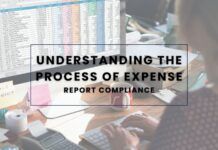







![Why AI Sales Calls Are Making Good Sales Reps Even Better [2025 Guide] ai sales calls](https://cdn-kmjmp.nitrocdn.com/YvtqmrsiHUxqerlSiZgbfzqqTARWTElr/assets/images/optimized/rev-834053b/blog.peakflo.co/wp-content/uploads/2025/09/65168cf6-3001-4733-8cbc-12d5684cf449-218x150.webp)







